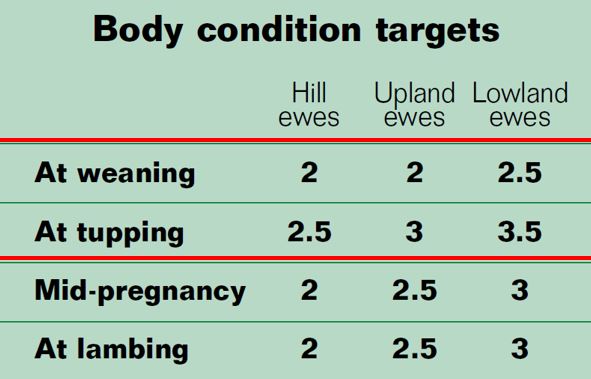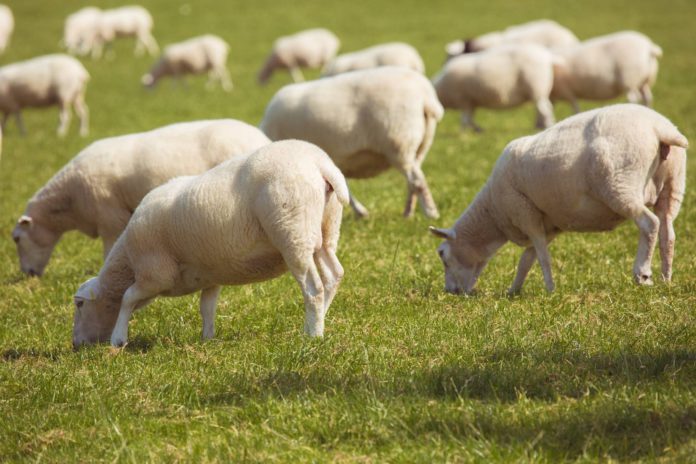Ruth Moore, Beef and Sheep Adviser, CAFRE, discusses Body Condition Scoring breeding ewes pre-tupping.
Body condition scoring ewes is a simple, effective, and cheap management tool to evaluate the body reserves of ewes.
Getting breeding ewes in the correct body condition before tupping will:
- Maximise ovulation rates;
- Optimise embryo survivability and reduce incidences of metabolic disease;
- Improve colostrum and milk production at lambing;
- Also, improve weaning weights.
After weaning and drying off, physically condition score ewes and batch them accordingly.
You can then adjust the ewe’s nutrition to maximise productivity and reduce the health and welfare problems associated with lean or overfat ewes.
Body condition scoring ewes
Most lowland flocks are split into three batches;
- Body Condition Score (BCS) <3 – thin ewes;
- BCS 3-3.5 – ewes in ideal condition;
- BCS > 3.5 – overfat ewes.
Hill and upland flocks will adjust these groups accordingly.
Assuming a unit of body condition score is equal to 10%-12% of a ewe’s mature live-weight. Therefore, a 70kg ewe would need to lose/gain 7-8 kg to change a body condition score. This level of weight change will require careful management and time.
Table 1 highlights the target BCS for ewes for different sheep production systems in Northern Ireland.

Feed lowland ewes in an ideal body condition score of 3-3.5 should maintain their condition and regularly monitor to ensure they are not gaining/losing weight.
Furthermore, lean ewes BCS < 3 need extra care and attention and are often the ewes that have reared multiples and produced plenty of milk.
It can take at least 6-8 weeks for a ewe to gain one unit of BCS if ewes are on high-quality grass.
Under conditioned and over fat
If ewes are BCS < 2 or resources are limited, they may require supplementary feeding.
A very low BCS at weaning is likely to affect ovulation rates, even if the BCS target is achieved before mating.
Timely identification of any other reasons for a low BCS, such as poor teeth, lameness or ill-health is essential.
Manage overfat ewes, BCS > 3.5 separately to ensure the target BCS is achieved.
These ewes can have poor ovulation rates, poor colostrum, and milk production due to the inefficient mobilisation of body condition and are higher risk for prolapse.
Stocking these ewes at a higher rate on lower-quality forage or using them to clean out paddocks after other stock will help to lose body condition gradually.
Careful management is required as attempting to slim ewes can cause problems with follicular development if they are subject to nutrition below their maintenance requirements in the last six weeks before mating.
Monitoring ewes as you attempt to achieve their target BSC is essential. Moving ewes between batches according to their weight loss/gain will be necessary.
Targeting 90% of ewes to be at their correct body condition score before tupping will, in turn, allow you to reach your optional scanning percentage, number of lambs born, and number of lambs weaned.
Review such targets regularly on sheep enterprises that physical and financially benchmark their performance and are key to a profitable system.
More farming tips and advice.





